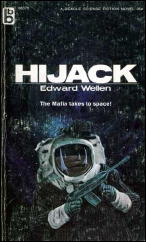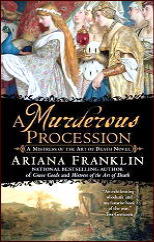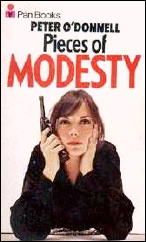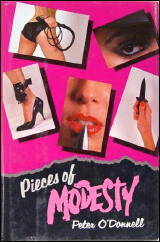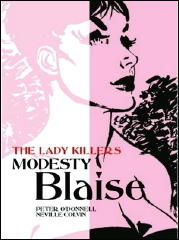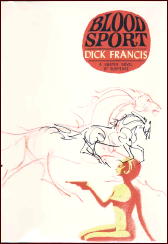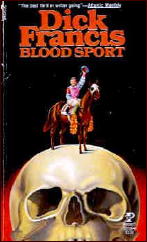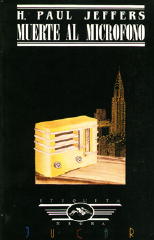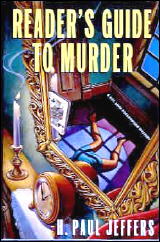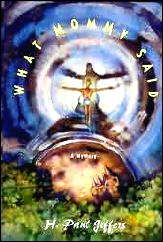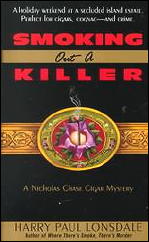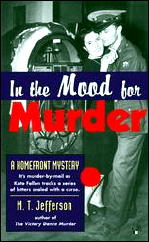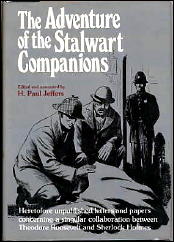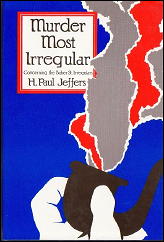Sun 17 Apr 2011
Mike Nevins on T. S. STRIBLING; and PATRICIA NEVINS.
Posted by Steve under Authors , Columns , Obituaries / Deaths Noted[14] Comments
by Francis M. Nevins
Does the name T.S. Stribling ring any bells? He lived from 1881 until 1965, and in the early FDR years he was considered one of the foremost authors of the American South. Before that he’d written extensively for pulp magazines like Adventure, which in the mid-1920s ran five stories of his about Professor Henry Poggioli, an American academic solving (well, trying to solve) various exotic crimes while traveling in the Caribbean area on sabbatical.
In “A Passage to Benares,†the last and best-known of the quintet, Poggioli was hanged as a murderer. But that wasn’t the end of the saga. About three years after his demise, and without a hint as to how he came back from the dead, he returned in a new series of tales, published in Adventure and other magazines from 1929 through the years of Stribling’s literary reputation.
A few years after winning the Pulitzer Prize for his novel The Store (1933), he was eclipsed forever as America’s Southern novelist by William Faulkner and the publishing world dropped him like a hot rock.
I was a teen when I first discovered Poggioli in the supersized Ellery Queen anthologies like 101 Years’ Entertainment and To the Queen’s Taste and in a number of the annual Queen’s Awards anthology volumes of the late Forties.
Later, when I began collecting back issues of EQMM, I found that Fred Dannay had reprinted a Poggioli story in Volume 1 Number 1 (Fall 1941) and had bought fifteen new stories about the character that appeared in the magazine between 1945 and 1955.
Then I discovered that in his last years Stribling had corresponded regularly with that certified mad genius of 20th-century literature, Harry Stephen Keeler (1890-1967).
Recently I’ve been reading Kenneth W. Vickers’ T. S. Stribling: A Life of the Tennessee Novelist (University of Tennessee Press, 2004), which amply covers Stribling’s correspondence with Fred Dannay (whom Vickers insists on calling a “young†editor even though Fred was about 40 when he began running Poggioli originals in EQMM) but says little about the correspondence between Stribling and Keeler.
The biography nudged me to re-read the first five Poggioli tales, collected as Clues of the Caribbees (1929), and to sample the later tales from EQMM, many of them collected in Best Dr. Poggioli Detective Stories (1978).
My reaction was similar to what it had been more than half a century ago when I was first exposed to the saga. In my teens I couldn’t make up my mind whether I liked these stories, and as I slipslide into senescence I still can’t. There seems to be something off-the-wall about every Poggioli story I tackle. Could his affinity for Keeler be a case of kindred spirits?
Stribling often called himself a satirist, and it seems clear that his intent was to poke fun at mystery fiction’s virtuosos of deduction like Holmes and Poirot. Since the first several Poggioli stories predate the debut of Ellery Queen as author and detective in The Roman Hat Mystery (1929), it’s clear that the polysyllabic literatus created by Fred and his cousin Manny Lee was not Stribling’s target.
But his is such a deadpan satire, so far removed from, say, Robert L. Fish’s send-up of Holmes and Watson in his Schlock Homes parodies, that many readers don’t get the point and remain in a state of head-scratching puzzlement.
As chance would have it, the closest to Stribling’s brand of satire that I’ve ever comes across is a brief passage from his buddy Harry Stephen Keeler. In The Steeltown Strangler (1950), an industrial plant beset by posters defaming its CEO is visited by author deKoven Blystone, creator of that brilliant Oriental sleuth Sharley Shang.
Blystone claims that he can provide a thumbnail description of each of the twenty linemen suspects if given their nicknames. In Chapter VII of the novel he proceeds to do just that. Offered the monicker of Strumberries, Blystone describes him as “A Greek with an unpronounceable name, but blue-eyed instead of brown.â€
“How — how do you know that Smyro Smyroyannis has got blue eyes?†“If he had brown ones,†Blystone replies, “He’d have gotten called Zupp.â€
Chapter VII of The Steeltown Strangler is chock-a-block with off-the-wall reasoning like this — which strikes me as close cousin to the off-the-wall stuff in the Poggioli stories.
The affinity between Stribling and Keeler — each man highly regarded for a short while and then so completely forgotten neither could find a U.S. publisher for anything they wrote — runs deep.
This column wasn’t intended to end here. I had planned to say more about some of the oddball events one finds in Stribling — for example, a man being put on trial for murder the same day he’s arrested.
I also wanted to discuss “The Mystery of the Paper Wad†(EQMM, July 1946), where Poggioli reveals at the denouement that two men, languishing in adjoining jail cells because they couldn’t afford to pay their estranged wives’ alimony judgments, had made a deal whereby each would kill the other’s spouse.
This may well have been Patricia Highsmith’s inspiration for the murder-swapping scheme in Strangers on a Train (1950).
What kept me from finishing this column as I had planned was that late in the evening of Sunday, March 6, my own Patricia died, very suddenly and unexpectedly. The death certificate gives the cause as sepsis, with pneumonia and stress-induced cardiomyopathy as contributing causes.
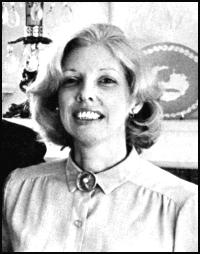
She never even knew she had pneumonia. A few weeks earlier she’d been suffering from what she took to be flu but she was, or at least seemed to be, completely over it, so much so that on Thursday the 3rd she’d put in nine hours of hard labor at the cat shelter where she volunteered one day a week.
She was fine on Friday the 4th also but started to feel ill that evening. From then on it was horrible: all night Friday, all day Saturday, all Saturday night. She refused to let me take her to the emergency room, saying hospitals never do anything on weekends but charge people.
Patty had been terrified of hospitals ever since her mother died in one after going in for something minor. At dawn on Sunday morning, the 6th, I made her go with me. She must have felt as if I were driving her in a tumbril to the guillotine.
A few hours later her internist told me that I had done the right thing and probably saved her life. In the emergency room I was told that she was having a heart attack right then and there but the medical people later changed their minds. She was taken to the cardiac catheterization lab where all sorts of tubes were stuck into her and all sorts of shots given to her but her blood pressure was so low that they were afraid to give her anything to relieve her pain.
Late that afternoon they told me to go home and come back in the morning, saying that she’d need to stay in the hospital for a week to ten days. That night, around 11:00 P.M., they called and told me to get out there at once: she had taken a turn for the worse. I had her health directive and showed it to them and there the story ends. She died about half an hour before midnight.
Our coming together, late in the 1970s, was almost a mathematical progression. First she had read my stories in EQMM, then she’d discovered from an article about me in the Post-Dispatch that I was a St. Louisan too, then we were introduced.
At that time she was living in suburban Webster Groves with three cats, a dog and a black spider monkey named Tar Baby. I had never heard of a domesticated monkey before and began reading literature from the Simian Society of America, of which Patty was an officer.
The result was “Black Spider,†which first appeared in EQMM (August 1979) and was later translated into several languages.
I named my fictional monkey after the real one, and whenever I received a copy of the story in another language the first thing I looked for was what the translator had done with the monk’s name, which is meaningless outside the U.S.
In Spanish she became Azabache, which means black as coal. The Japanese simply transliterated the syllables, turning the name into gibberish. That story would never have been written if I hadn’t met Patty and Tar Baby. It may be the foremost monkey mystery in the genre — mainly because there are no others.
I’ve often said that TB wasn’t a monkey but Patty’s daughter by an earlier marriage. They were as close as a mother and daughter, and she was devastated when her child died.
Afterward all her pets were cats, and I’ve dedicated several books to her and whatever animals were our housemates at a given time. The last cats in her life and the last four-legged dedicatees of a book of mine were Rico and Squeako. If cats had saints, she would be St. Patty.
Anyone reading this column has probably heard the story of Mr. Flitcraft and the falling beam as Hammett told it in The Maltese Falcon. A beam fell on Patty that Sunday night, and on me, and on everyone who knew and loved her.
